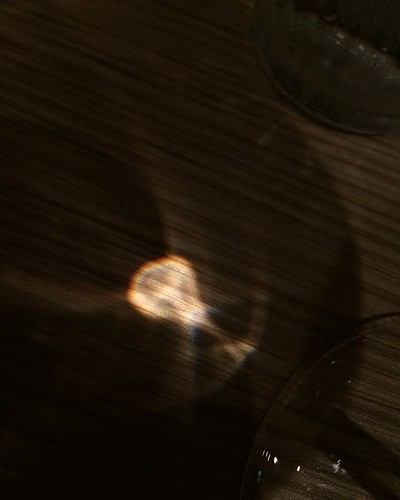(represented as ball and sticks). The spatial structure fragments are shown as a ribbon diagram, as well as the neighboring amino acid residues participating in the formation of hydrogen bonds as sticks.Mar. Drugs ,Eventually, this highlighted that any substitution of positively charged and volumetric Arg residue at position for HCRG makes a positive contribution to the trypsin binding affinity with the minimal one particular for Arg substitution to Lys (Affinity is . kcalmol). This outcome agrees properly using the information, displaying that the enrichment of the main contact web page of Kunitztype polypeptides with positively charged residues raises the effectiveness of protease inhibition ,. Replacement of Gly to Arg, that is standard for HCRG, apparently promotes the formation of a tighter complicated using the enzyme; the contribution to Affinity is . kcalmol. The Gly backbone of HCRG types a Hbond with Phe of trypsin, as was observed for Tyr and Met (both equal to Gly of HCRG) of rShPIA and inhibitor domain of Alzheimer’s amyloid betaprotein precursor (APPI), respectively (PDB IDs MQ and TAW, respectively). By contrast, Arg of HCRG stabilizes this complex, not simply by backbone Hbonding, but, similarly to Arg of BPTI, also through extra side chain hydrogen bonding with His too as by MedChemExpress CC-115 (hydrochloride) arenecation interaction with Tyr of trypsin (Figure B). Alternatively, substituting Lys to Gly at the weak speak to internet site from the HCRG polypeptide contributes towards the weakening on the inhibitor forces of interaction with trypsin (. kcalmol, Figure A). The small neutral side chain of Gly positioned on the border of your HCRG rypsin interface will not be capable of supporting the structure of this complex by tight hydrophobic contacts and by direct or watermediated hydrogen bonds either with trypsin Asn backbone or with Gln side chain, though such bonds are formed by long and positively charged Lys side chains of HCRG (Figure C) and Arg (equal to Lys of HCRG) of BPTI (PDB ID FTL). The beststudied and most potent inhibitor of serine GSK6853 cost proteases of the Kunitz family members is BPTI (Ki in the variety M). It has been well established that Lys (the numbering is depending on the sequence of HCRGpolypeptides), Arg, and Ile tremendously contribute towards the really higher affinity of BPTI to serine proteases ,,. Notably, all known Kunitz polypeptides from sea anemones (Figure) have Pro or Arg or Thr as an alternative to Ile in BPTI. This contributes to further interaction with all the side chain of Tyr of trypsin, resulting in a weaker affinity to  trypsin. Consequently, the substitutions in HCRG and HCRG at positions and may perhaps clarify the reduced serine protease inhibitory activity and differences on the kinetic parameters with the interaction (Ki and Kd) with trypsin, which we’ve got observed experimentally. Determination of HCRG and HCRG AntiInflammatory Activity Quite a few reports are devoted to the prospect of making use of Kunitztype protease inhibitors (aprotinin , bikunin , hepatocyte growth aspect activator inhibitor (HAI) , and tissue aspect pathway inhibitor (TFPI)) with distinctive antiinflammatory action in the treatment of inflammatory pathologies . Additionally, a PubMed ID:https://www.ncbi.nlm.nih.gov/pubmed/7278451 Kunitztype serine protease inhibitor, SBTI from soybeans ,, has a protective effect on lipopolysaccharide (LPS)induced inflammation via inhibiting the enhanced production of proinflammatory molecules such as such mediators as interleukin (IL), interleukin (IL) , and tumor necrosis aspect (TNF) ,. This prompts the search for new sources of inhibitors and study of their therape.(represented as ball and sticks). The spatial structure fragments are shown as a ribbon diagram, along with the neighboring amino acid residues participating inside the formation of hydrogen bonds as sticks.Mar. Drugs ,Eventually, this highlighted that any substitution of positively charged and volumetric Arg residue at position for HCRG tends to make a good contribution towards the trypsin binding affinity with all the minimal a single for Arg substitution to Lys (Affinity is . kcalmol). This outcome agrees nicely using the information, displaying that the enrichment on the major contact site of Kunitztype polypeptides with positively charged residues raises the effectiveness of protease inhibition ,. Replacement of Gly to Arg, which can be common for HCRG, apparently promotes the formation of a tighter complex using the enzyme; the contribution to Affinity is . kcalmol. The Gly backbone of HCRG forms a Hbond with Phe of trypsin, as was observed for Tyr and Met (each equal to Gly of HCRG) of rShPIA and inhibitor domain of Alzheimer’s amyloid betaprotein precursor (APPI), respectively (PDB IDs MQ and TAW, respectively). By contrast, Arg of HCRG stabilizes this complex, not just by backbone Hbonding, but, similarly to Arg of BPTI, also by means of more side chain hydrogen bonding with His also as by arenecation interaction with Tyr of trypsin (Figure B). However, substituting Lys to Gly in the weak get in touch with internet site in the HCRG polypeptide contributes for the weakening in the inhibitor forces of interaction with trypsin (. kcalmol,
trypsin. Consequently, the substitutions in HCRG and HCRG at positions and may perhaps clarify the reduced serine protease inhibitory activity and differences on the kinetic parameters with the interaction (Ki and Kd) with trypsin, which we’ve got observed experimentally. Determination of HCRG and HCRG AntiInflammatory Activity Quite a few reports are devoted to the prospect of making use of Kunitztype protease inhibitors (aprotinin , bikunin , hepatocyte growth aspect activator inhibitor (HAI) , and tissue aspect pathway inhibitor (TFPI)) with distinctive antiinflammatory action in the treatment of inflammatory pathologies . Additionally, a PubMed ID:https://www.ncbi.nlm.nih.gov/pubmed/7278451 Kunitztype serine protease inhibitor, SBTI from soybeans ,, has a protective effect on lipopolysaccharide (LPS)induced inflammation via inhibiting the enhanced production of proinflammatory molecules such as such mediators as interleukin (IL), interleukin (IL) , and tumor necrosis aspect (TNF) ,. This prompts the search for new sources of inhibitors and study of their therape.(represented as ball and sticks). The spatial structure fragments are shown as a ribbon diagram, along with the neighboring amino acid residues participating inside the formation of hydrogen bonds as sticks.Mar. Drugs ,Eventually, this highlighted that any substitution of positively charged and volumetric Arg residue at position for HCRG tends to make a good contribution towards the trypsin binding affinity with all the minimal a single for Arg substitution to Lys (Affinity is . kcalmol). This outcome agrees nicely using the information, displaying that the enrichment on the major contact site of Kunitztype polypeptides with positively charged residues raises the effectiveness of protease inhibition ,. Replacement of Gly to Arg, which can be common for HCRG, apparently promotes the formation of a tighter complex using the enzyme; the contribution to Affinity is . kcalmol. The Gly backbone of HCRG forms a Hbond with Phe of trypsin, as was observed for Tyr and Met (each equal to Gly of HCRG) of rShPIA and inhibitor domain of Alzheimer’s amyloid betaprotein precursor (APPI), respectively (PDB IDs MQ and TAW, respectively). By contrast, Arg of HCRG stabilizes this complex, not just by backbone Hbonding, but, similarly to Arg of BPTI, also by means of more side chain hydrogen bonding with His also as by arenecation interaction with Tyr of trypsin (Figure B). However, substituting Lys to Gly in the weak get in touch with internet site in the HCRG polypeptide contributes for the weakening in the inhibitor forces of interaction with trypsin (. kcalmol,  Figure A). The compact neutral side chain of Gly positioned around the border in the HCRG rypsin interface is just not capable of supporting the structure of this complicated by tight hydrophobic contacts and by direct or watermediated hydrogen bonds either with trypsin Asn backbone or with Gln side chain, although such bonds are formed by extended and positively charged Lys side chains of HCRG (Figure C) and Arg (equal to Lys of HCRG) of BPTI (PDB ID FTL). The beststudied and most potent inhibitor of serine proteases of your Kunitz loved ones is BPTI (Ki within the range M). It has been nicely established that Lys (the numbering is determined by the sequence of HCRGpolypeptides), Arg, and Ile considerably contribute to the particularly high affinity of BPTI to serine proteases ,,. Notably, all identified Kunitz polypeptides from sea anemones (Figure) have Pro or Arg or Thr rather than Ile in BPTI. This contributes to further interaction together with the side chain of Tyr of trypsin, resulting inside a weaker affinity to trypsin. Consequently, the substitutions in HCRG and HCRG at positions and may possibly explain the reduced serine protease inhibitory activity and variations of the kinetic parameters with the interaction (Ki and Kd) with trypsin, which we have observed experimentally. Determination of HCRG and HCRG AntiInflammatory Activity A number of reports are devoted to the prospect of utilizing Kunitztype protease inhibitors (aprotinin , bikunin , hepatocyte development element activator inhibitor (HAI) , and tissue factor pathway inhibitor (TFPI)) with different antiinflammatory action in the remedy of inflammatory pathologies . Furthermore, a PubMed ID:https://www.ncbi.nlm.nih.gov/pubmed/7278451 Kunitztype serine protease inhibitor, SBTI from soybeans ,, includes a protective effect on lipopolysaccharide (LPS)induced inflammation by way of inhibiting the enhanced production of proinflammatory molecules like such mediators as interleukin (IL), interleukin (IL) , and tumor necrosis aspect (TNF) ,. This prompts the search for new sources of inhibitors and study of their therape.
Figure A). The compact neutral side chain of Gly positioned around the border in the HCRG rypsin interface is just not capable of supporting the structure of this complicated by tight hydrophobic contacts and by direct or watermediated hydrogen bonds either with trypsin Asn backbone or with Gln side chain, although such bonds are formed by extended and positively charged Lys side chains of HCRG (Figure C) and Arg (equal to Lys of HCRG) of BPTI (PDB ID FTL). The beststudied and most potent inhibitor of serine proteases of your Kunitz loved ones is BPTI (Ki within the range M). It has been nicely established that Lys (the numbering is determined by the sequence of HCRGpolypeptides), Arg, and Ile considerably contribute to the particularly high affinity of BPTI to serine proteases ,,. Notably, all identified Kunitz polypeptides from sea anemones (Figure) have Pro or Arg or Thr rather than Ile in BPTI. This contributes to further interaction together with the side chain of Tyr of trypsin, resulting inside a weaker affinity to trypsin. Consequently, the substitutions in HCRG and HCRG at positions and may possibly explain the reduced serine protease inhibitory activity and variations of the kinetic parameters with the interaction (Ki and Kd) with trypsin, which we have observed experimentally. Determination of HCRG and HCRG AntiInflammatory Activity A number of reports are devoted to the prospect of utilizing Kunitztype protease inhibitors (aprotinin , bikunin , hepatocyte development element activator inhibitor (HAI) , and tissue factor pathway inhibitor (TFPI)) with different antiinflammatory action in the remedy of inflammatory pathologies . Furthermore, a PubMed ID:https://www.ncbi.nlm.nih.gov/pubmed/7278451 Kunitztype serine protease inhibitor, SBTI from soybeans ,, includes a protective effect on lipopolysaccharide (LPS)induced inflammation by way of inhibiting the enhanced production of proinflammatory molecules like such mediators as interleukin (IL), interleukin (IL) , and tumor necrosis aspect (TNF) ,. This prompts the search for new sources of inhibitors and study of their therape.